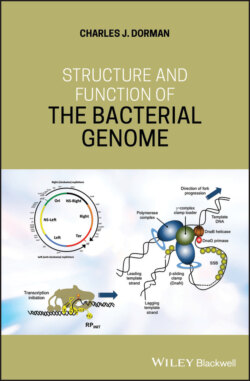Читать книгу Structure and Function of the Bacterial Genome - Charles J. Dorman - Страница 42
1.31 DNA Topoisomerases: DNA Topoisomerase III
ОглавлениеTopo III is a second type I topoisomerase that, like Topo I, is an ATP‐independent monomeric enzyme (Table 1.1). It is encoded by the topB gene and is not essential for the survival of the bacterium (Usongo et al. 2013). However, mutants deficient in both Topo I and in Topo III do not survive (Stupina and Wang 2005). Topo III has weak DNA‐relaxing activity and functions principally as a decatenase (Nurse et al. 2003; Perez‐Cheeks et al. 2012). Its apparent weakness as a DNA‐relaxing enzyme compared with Topo I arises from a difference in the mechanisms used by the two topoisomerases: Topo I operates in a processive manner with short pauses between processive runs, whereas Topo III takes long pauses, leading to a relaxing process with an overall rate that seems slower (Terekhova et al. 2012). While Topo I plays an important role in controlling the frequency of chromosome replication initiation at oriC, Topo III contributes to the management of replication fork collision in the Ter macrodomain (Suski and Marians 2008). In fact, all four topoisomerases are important components of the chromosome replication machinery and display both a division of labour and an interesting degree of redundancy that allows the cell to continue to function even if one of the enzymes experiences interference.
